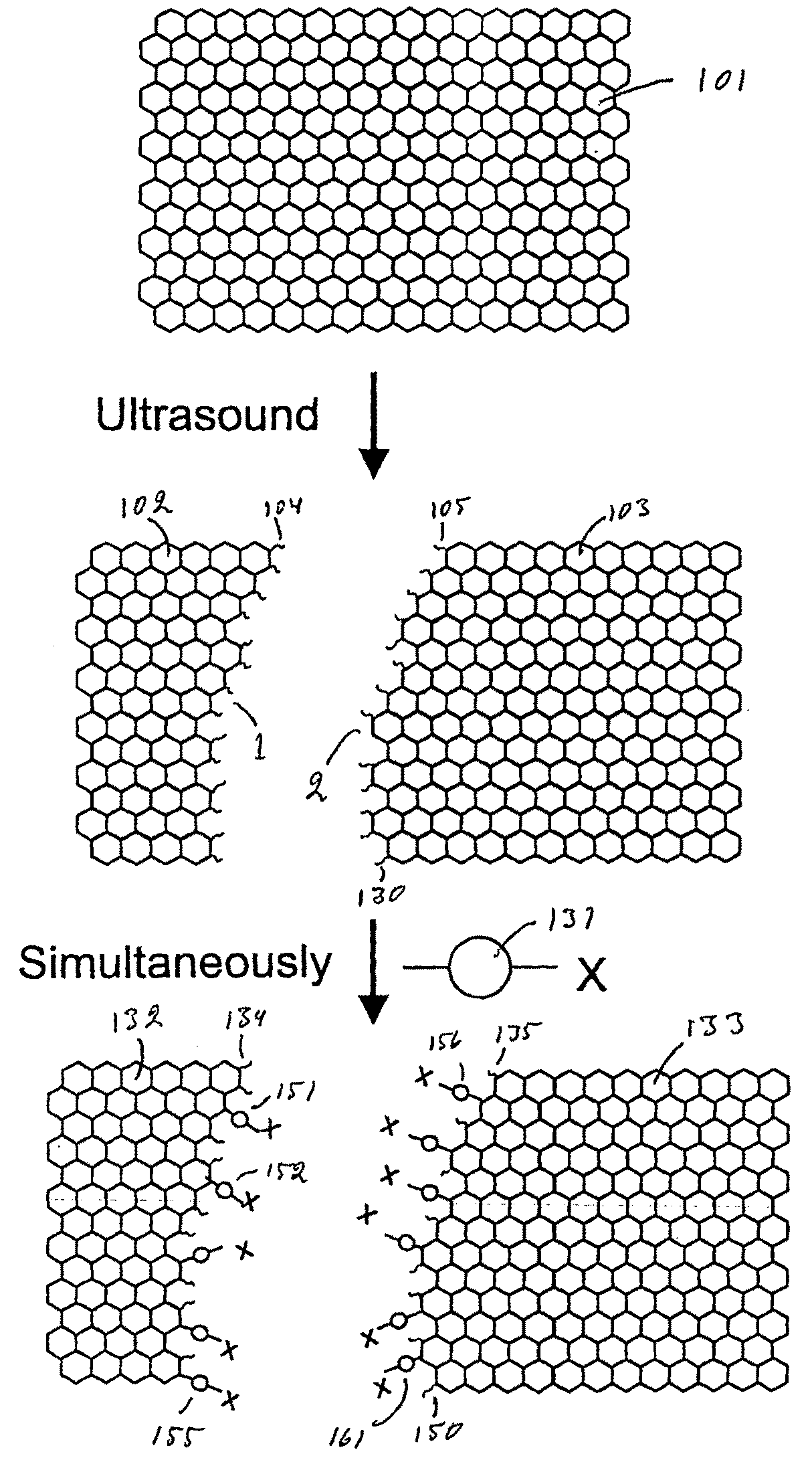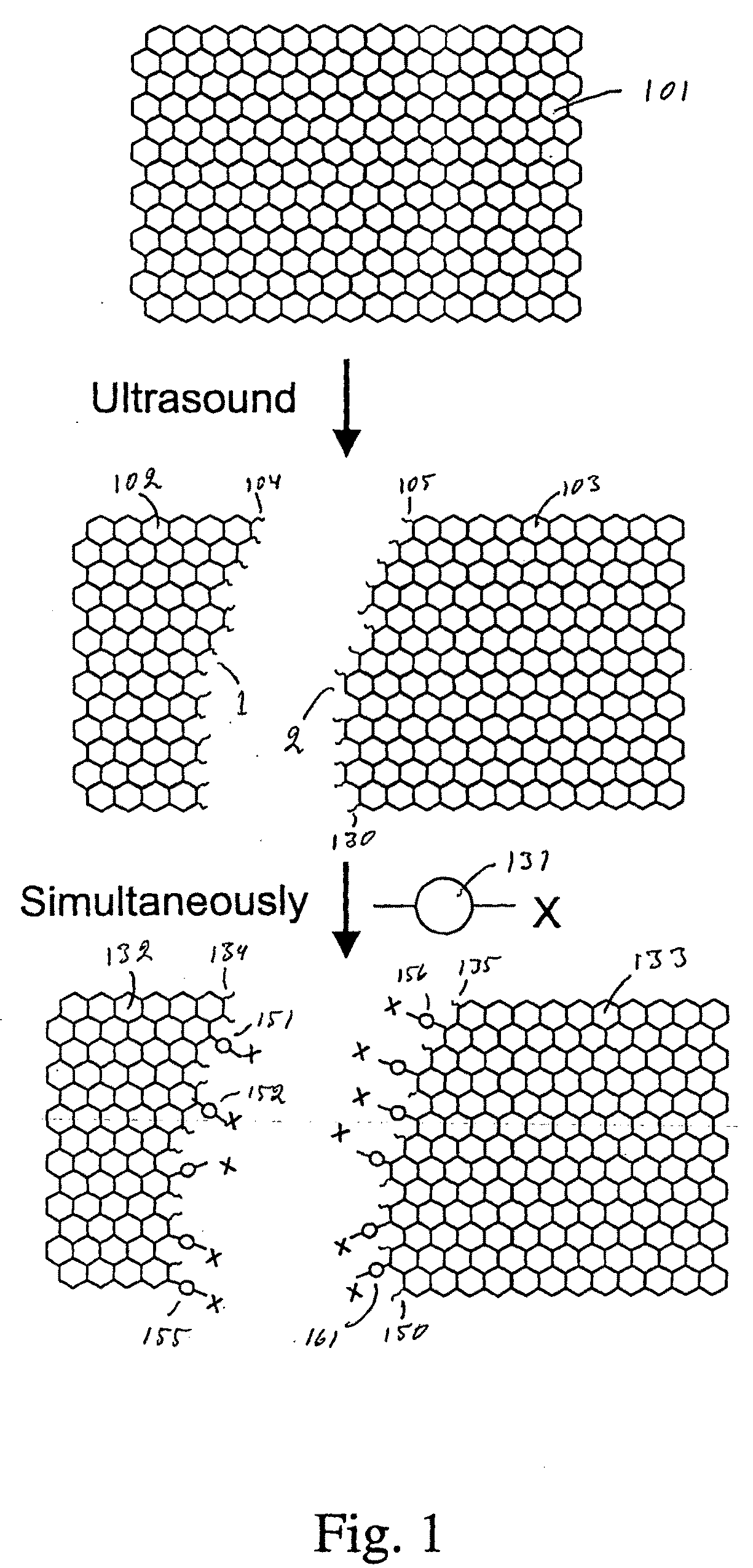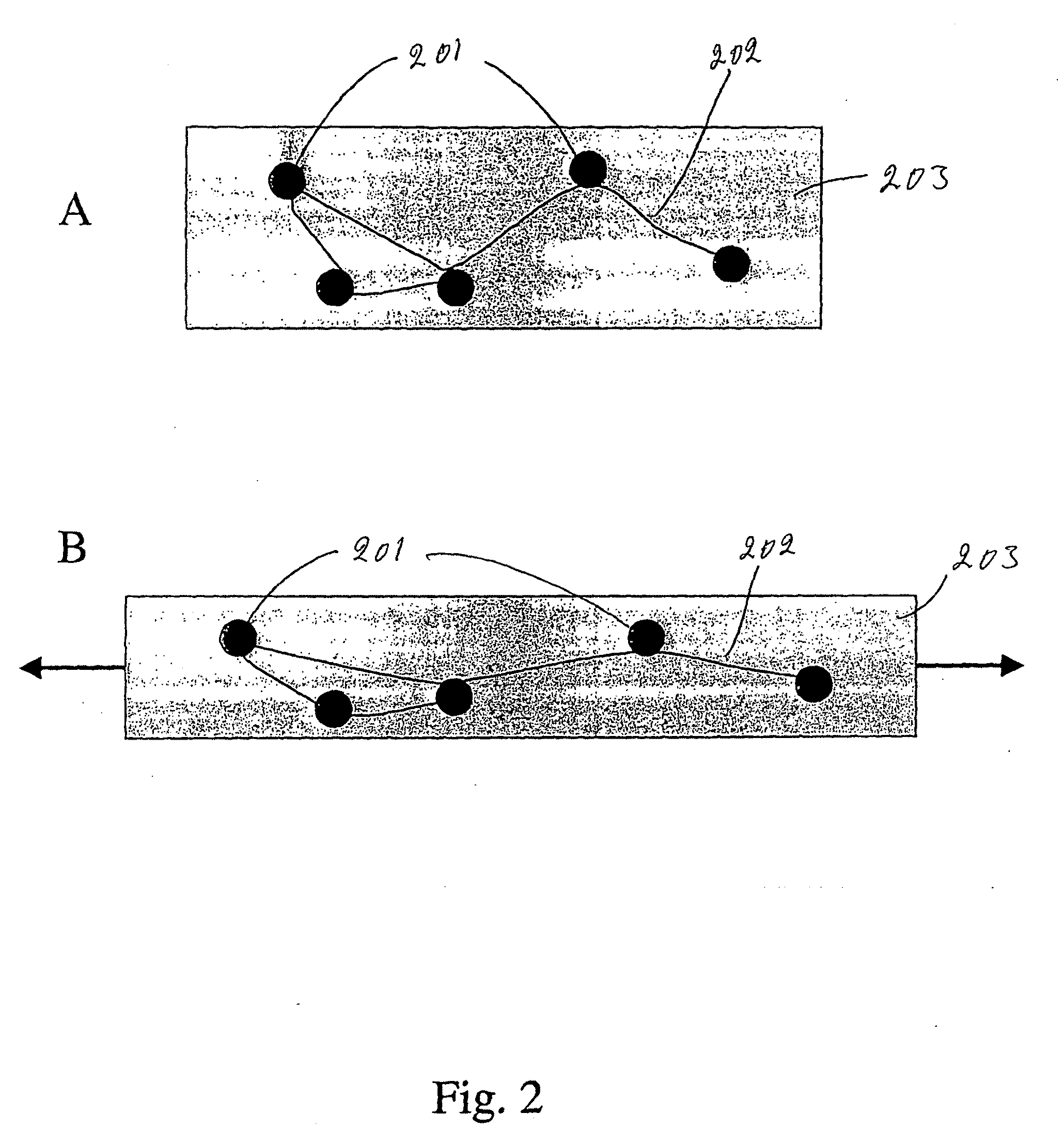Novel hybride materials and related methods and devices
a hybride material and hybrid technology, applied in chemical/physical/physical-chemical processes, chemical/physical processes, inorganic chemistry, etc., can solve the problems of inconvenient straight structure, slippery graphite-like surface, and many problems of cnt based materials, etc., to achieve strong, light and/or more corrosion resistance
- Summary
- Abstract
- Description
- Claims
- Application Information
AI Technical Summary
Benefits of technology
Problems solved by technology
Method used
Image
Examples
example 1
[0152]CNTs (10 mg, purity about 11%) were suspended into 10 ml of THF. Hydrazine solution (1 ml, 1M) in THF was added. The vial was closed under nitrogen. The contents were treated with ultrasonic vibration for 2 h. The THF turned almost black, and most of the CNTs had dissolved. The magnetic impurities were removed by keeping the vial close to a permanent magnet, and pipetting the THF into another vial. The THF solution (suspension) was mixed five minutes with polypropene beads to remove the tar like residue (amorphous carbon). A sample of the solution was put onto a silicon substrate, and the SEM image was recorded (FIG. 22). Elemental analysis of a sample that had been kept at 250° C. for two hours contained 4.3% of nitrogen. Near IR spectrum showed minor differences with the spectrum of the starting material. Thus, the integrity of the HNT was retained.
example 2
[0153]Same as example 1, but catalytic particles were first extracted by acid, neat hydrazine (2 ml) was used, and sonication was performed with high powered tip sonicator. After hydrophobic extraction the hydrazine was evaporated. The hydrazino-HNTs were much shorter than in example 1. The hydrazine end and side wall groups were detected by fluoresceine isothiocyanate labeling from a small sample. The hydrazine groups were reduced using horizontal gold coated polycarbonate disk as a working electrode and platinum wire is a counter electrode. The hydrazino-HNT powder was put onto the gold surface. Ruthenium chloride water / methanol solution was added, and 1 V potential was applied. The product was washed with water / methanol mixture, and dried.
example 3
[0154]Into the purified reaction product from Example 1 was added 100 mg fluorescein isothiocyanate. The reaction mixture was stirred well for one hour. Water was added (10 ml), and the mixture was put into a dialysis tube, and dialyzed against 200 ml of PBS buffer. The dialysis was continued for two weeks so that the buffer was changed every day, and the dialysis tube twice a week. No fluorescence could be detected in the last two buffers after the dialysis. The fluorescence and absorbance of the reaction product was measured against standard fluorescein solutions. The absorbance was 0.3 units corresponding the fluorescein density of 8000 per one micrometer of the amino-HNT. The HNT bound fluorescein had quantum efficiency one third of soluble fluorescein, because the quenching effect of the HNT.
PUM
| Property | Measurement | Unit |
|---|---|---|
| frequencies | aaaaa | aaaaa |
| frequencies | aaaaa | aaaaa |
| diameters | aaaaa | aaaaa |
Abstract
Description
Claims
Application Information
 Login to View More
Login to View More - R&D
- Intellectual Property
- Life Sciences
- Materials
- Tech Scout
- Unparalleled Data Quality
- Higher Quality Content
- 60% Fewer Hallucinations
Browse by: Latest US Patents, China's latest patents, Technical Efficacy Thesaurus, Application Domain, Technology Topic, Popular Technical Reports.
© 2025 PatSnap. All rights reserved.Legal|Privacy policy|Modern Slavery Act Transparency Statement|Sitemap|About US| Contact US: help@patsnap.com



